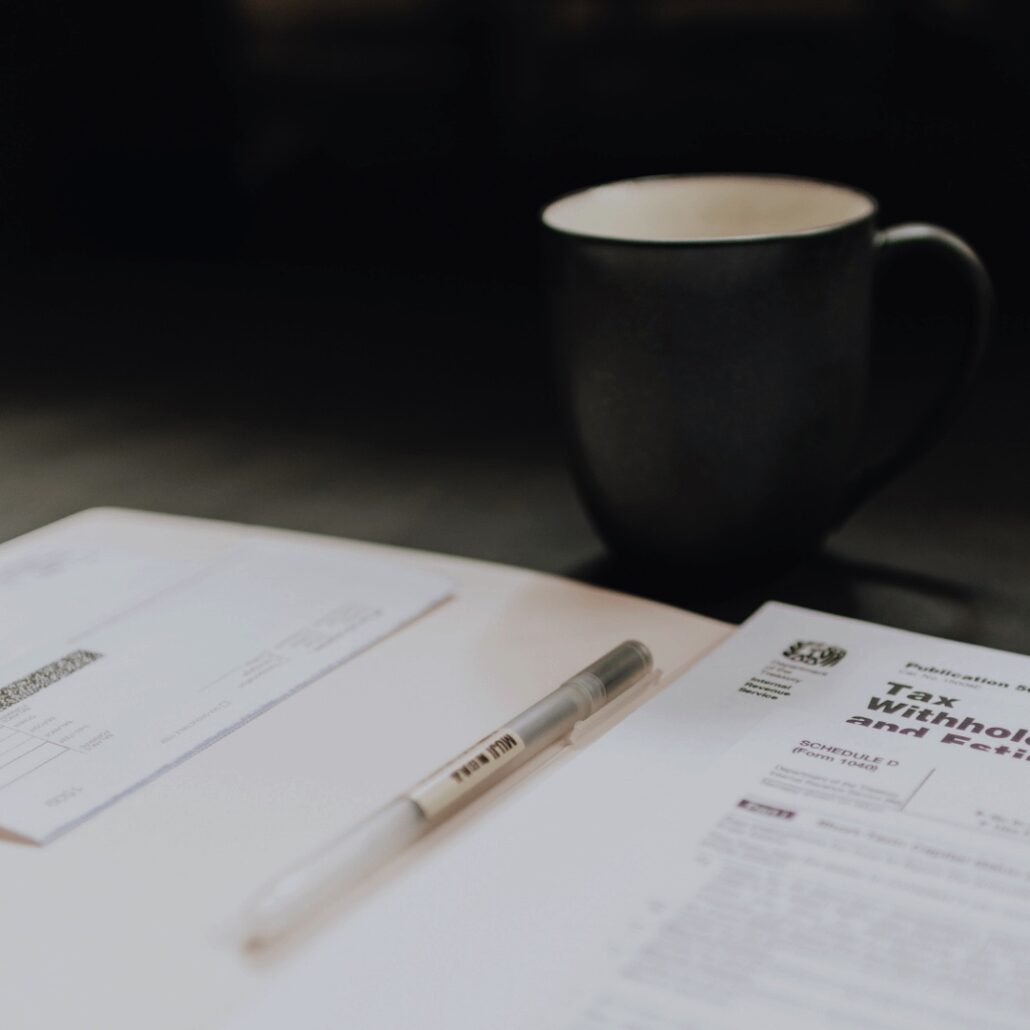Shockingly, we haven’t yet written a post on how to prepare for filing your taxes! We know taxes aren’t the most exciting topic, but they are a crucial part of your financial health. Now is a great time to get organized ahead of tax time. Whether you do your taxes yourself or pay a professional to handle them, staying organized will save you time and potentially even money (especially when you can avoid late fines).
Here are some basic steps to take when preparing for tax time to help things go as smoothly as possible:
Know When Taxes Are Due
Income tax returns are typically due on April 15th each year. There is the possibility the IRS will make exceptions to that rule, such as when the deadline was extended to May 17th in 2020 due to the pandemic. This year, for example, taxes are due Monday, April 18th, 2022 due to the holiday. Tax filers in Maine and Massachusetts, by the way, have until April 19th due to Patriots’ Day.
If you won’t be able to file your taxes in time for the deadline, you can always file for a six-month extension using Form 4868. However, keep in mind that if you do file for an extension, the IRS requires that you still pay any estimated taxes that are owed by the original deadline.
Make a Folder (Digital or Physical) for Tax Documents
Make one folder for the year’s tax return and put all applicable tax documents in it. Depending on your preferences, this can be a physical manila folder or a digital folder, such as Dropbox or Google Drive. These days, digital copies of tax documents are the most efficient way to go. You don’t even need to have a scanner in the house to digitize paper documents. You can use a mobile app like Genius Scan to take pictures of the documents with your phone and upload them to your computer as PDFs. If you have an iPhone, you can use the scanner option located in your Notes app.
Gather Up Tax Documents
Next, you’ll want to make sure all applicable documents are in one place for when you go to file or submit everything to a tax professional. Here are the most common documents that would be stored in this folder (although they may not all apply to your situation):
- W2 forms issued by your employer: These must be issued by January 31st of each year, and they may be physical or electronic.
- 1099 forms: There are different types of 1099 forms, depending on the source of income, such as 1099-INT forms for interest and 1099-MISC forms for independent contractor work.
- Last year’s tax return: It’s always helpful to have a copy of last year’s tax return so that you can review it to see what sort of deductions and documents may be needed for this year.
Consider Deductions and Gather Up Transaction History If Needed
Whether you take the standard deduction or you itemize deductions, you may get the benefit of deductions on your taxes from certain activities during the year. If you know you’re going to use the standard deduction, you don’t need to worry about tracking your transactions. If itemizing is a possibility and could get you a larger deduction, then gather up the documentation (bank and credit card statements suffice nowadays instead of paper receipts) for any of these popular deduction items that apply to you so that you’re ready to report them come tax time. Note that this list is relevant as of this writing in February 2022 and is subject to change with future updates to the tax code. A good place to reference the most up-to-date info is the IRS website:
- Retirement account contributions: Contributions to certain retirement accounts, such as Traditional IRAs, are deductible within certain limits.
- Educational expenses: As a student, you can claim a deduction for tuition and fees paid, as well as interest paid on student loans.
- Medical bills: If you have medical expenses that exceed 7.5% of your adjusted gross income, you may be able to use those to decrease the amount of taxes you owe.
- Property taxes and mortgage interest: Your mortgage lender should send you a document showing how much interest you can claim as a deduction on your taxes.
- Charitable donations: You may be able to claim a deduction for charitable donations, but keep in mind that you’ll need a receipt or documentation to show as proof.
- Classroom expenses: Teachers can deduct up to $250 of money spent on classroom supplies.
- State and local taxes: Right now, you can deduct up to $10,000 in state and local taxes, including property taxes.
Organize Business Income and Expenses
If you operate a business as a sole proprietor, you’ll have to file a Schedule C form along with your taxes, which reports the profits and losses of your business and includes business expenses. Thus, it can save a lot of headache to keep your accounting system clean so that you can easily fill out this form. Again, bank statements and credit card statements suffice for transaction records. Receipts are only necessary nowadays if you pay for things in cash (or if, heaven forbid, you get audited). When it comes time to prepare your tax return, make sure that all of your income and expense transactions are properly labeled and reconciled.
When you have everything organized and in one place, it makes life so much easier for the tax preparer (whether that’s you or someone else). The tax return and its associated documents are also really helpful for your financial planner to see, because a fresh pair of expert eyes can help to identify any opportunities or missing pieces. For example, we like to check the level of tax withholding at the top of each tax year for clients to ensure taxes aren’t being overpaid or (most importantly) underpaid. Tax payments can be estimated using a tax calculator and checked on the pay stub.

Brandon Tacconelli is the Director of Client Care at Thinking Big Financial, Inc. Thinking Big is a fee-only financial planning firm in New York City specializing in working with the LGBTQ+ Community.

